Boost your skills with Growth Memo’s weekly expert insights. Subscribe for free!
More data shows ChatGPT isn’t taking market share away from Google.
Instead, it’s expanding the range of use cases and blurring the line between searching for information and performing tasks.
I looked at Similarweb data to understand how this affects four different stages of the user journey across Google and ChatGPT:
- Usage.
- Behavior.
- Outbound clicks.
- Converting.
What I found is that ChatGPT adoption is, essentially, a 400,000-pound locomotive barreling down the tracks with no intention of stopping anytime soon.
User conversations within ChatGPT are rich in context, which leads to higher conversion rates when intent shifts from information seeking or generating to buying.
Lastly, and also most notably for SEOs and growth marketers, ChatGPT is sending a lot more users out to the web.
Of course, all of these stats are still small in comparison to Google.
However, no effort from Google has been able to slow the momentum of ChatGPT’s runaway train. About the data I used in this analysis:
- Data source: Similarweb (shoutout to Sam Sheridan).
- Time period examined: July 2024 – June 2025 (last 12 months) vs. July 2023 – June 2024 (previous 12 months).
- I also examined U.S. vs. UK user behavior.
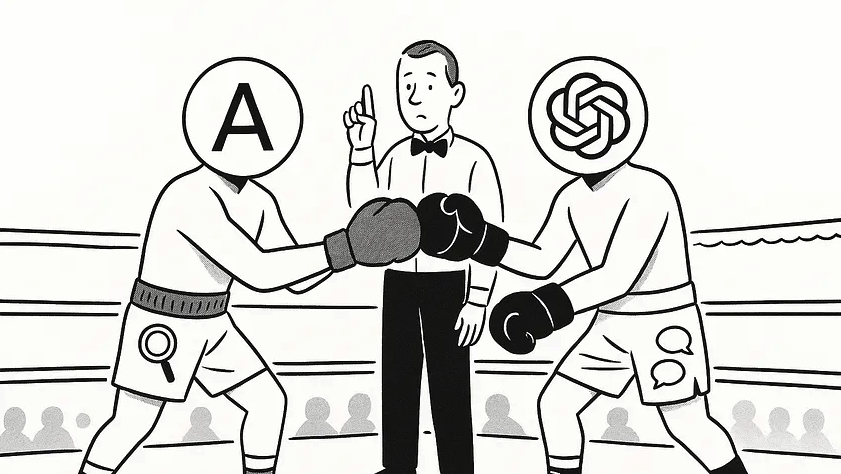 Image Credit Kevin Indig
Image Credit Kevin IndigVisits: ChatGPT Is Growing At Rapid Pace
People are rushing to ChatGPT.
Over the last 12 months in the U.S., ChatGPT visits grew from 3.5 to 6.8 billion visits (+94%).
In the UK, it was even faster: 131% YoY, from 868 million to 2 billion.
Over the same time span, Google growth stagnated. Here’s what the data showed:
- U.S. stagnation: -0.85% (196 vs. 194 billion).
- UK stagnation: -0.22% (35.56 vs. 35.49 billion).
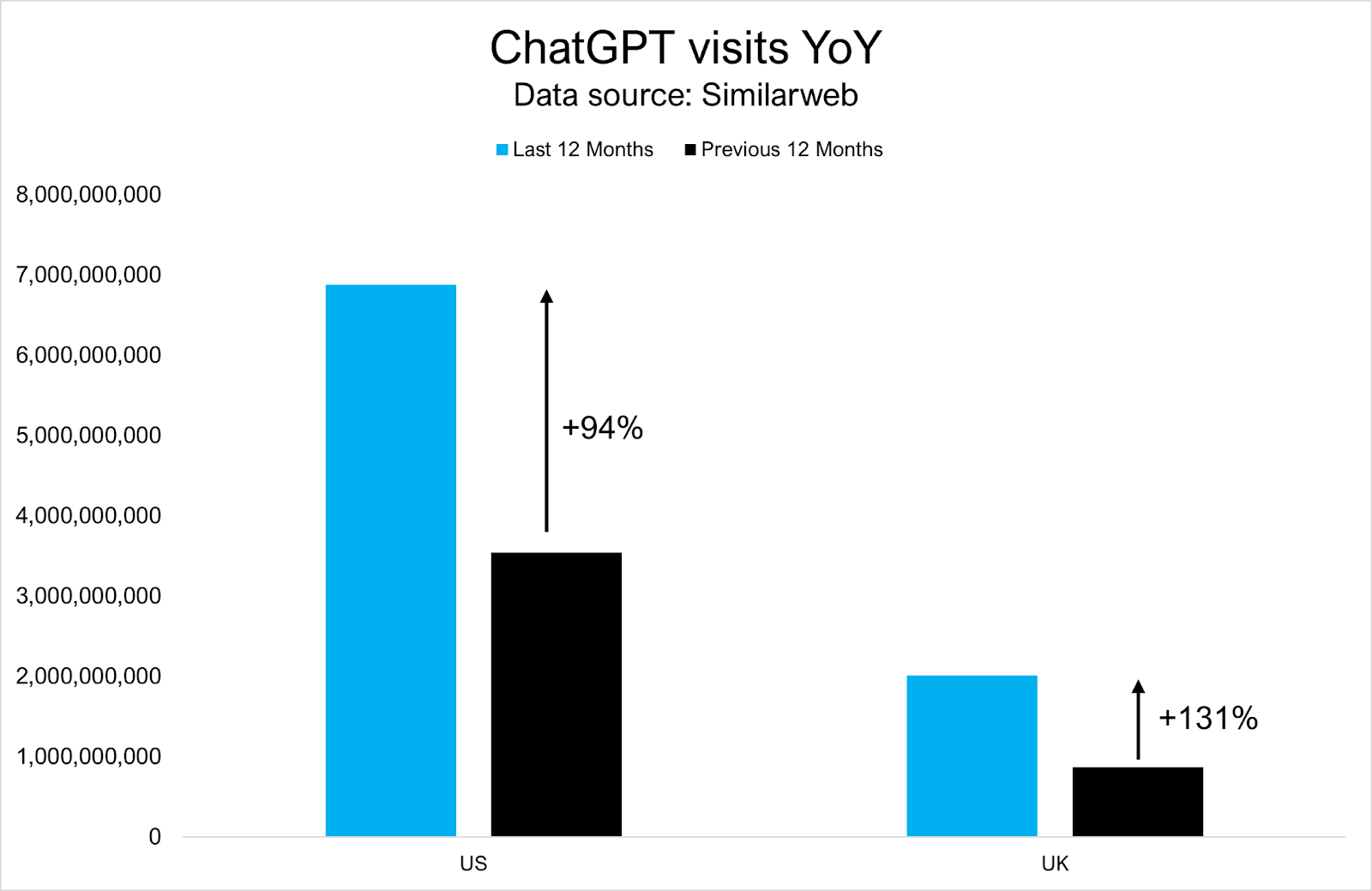 Image Credit: Kevin Indig
Image Credit: Kevin IndigTo put it into perspective: Google had almost 200 billion visits in the U.S. over the last 12 months, compared to ChatGPT’s 6.8 billion.
So, ChatGPT has a mere 3.4% of Google’s total visits.
However, if growth rates hold steady, in theory, ChatGPT could hit Google’s volume in the next five years.
My hypothesis: It’s almost guaranteed that ChatGPT won’t hit Google’s visit volume because there are too many moving parts (energy/chip limitations, training data, quality improvements, regulation, etc.).
But consider that Google has declined by -0.85% (~2 billion visits) year-over-year, and you can see where this is going.
Visits can only tell you so much.
Recent data from Semrush and Profound suggests that one-third to two-thirds of user intent when interacting with AI chatbots is generative, meaning users use ChatGPT to do and less to search [1, 2].
Leaked chats from ChatGPT and other AI chatbots confirm the aggregate data.
So, even when we compare visits to ChatGPT vs. Google, they’re not leading to the same outcome.
But, against that argument, I will say that Google morphs more into a mirror of ChatGPT with AI Mode – and every generative intent has a high chance of including information along the conversation journey that is sourced to other sites or creators.
The conversational nature of AI chatbots means intent is fluid and can change from one prompt to the next.
Along the way, it’s likely users come across information in their conversations that would’ve been a classic Google Search for products or solutions.
At the end of the day, ChatGPT is continuing its adoption as the fastest-growing product on earth to date.
What does that mean for you?
- Stay the course.
- Keep tracking referral traffic, conversions, and topic visibility on Google + ChatGPT.
- Optimize for visibility with a strong focus on classic SEO.
- Keep an ear to the ground and learn as much as you can. Things are evolving fast, and clarity will come with time.
Quick reminder here: I recently transitioned my WhatsApp group over to Slack. I share ongoing news and learnings throughout the week openly and freely, so it’s a great place to stay updated without all the extra (and sometimes overwhelming) noise. No need to be a premium subscriber to get access to the main discussion channel. Join here!
On The Platform: User Behavior Context Is Rich
Old habits are hard to break.
People are used to searching on Google a certain way, while ChatGPT is a green field.
For the overwhelming majority of us, our first experience with ChatGPT was a conversation, so we all adopted it as the default way to engage.
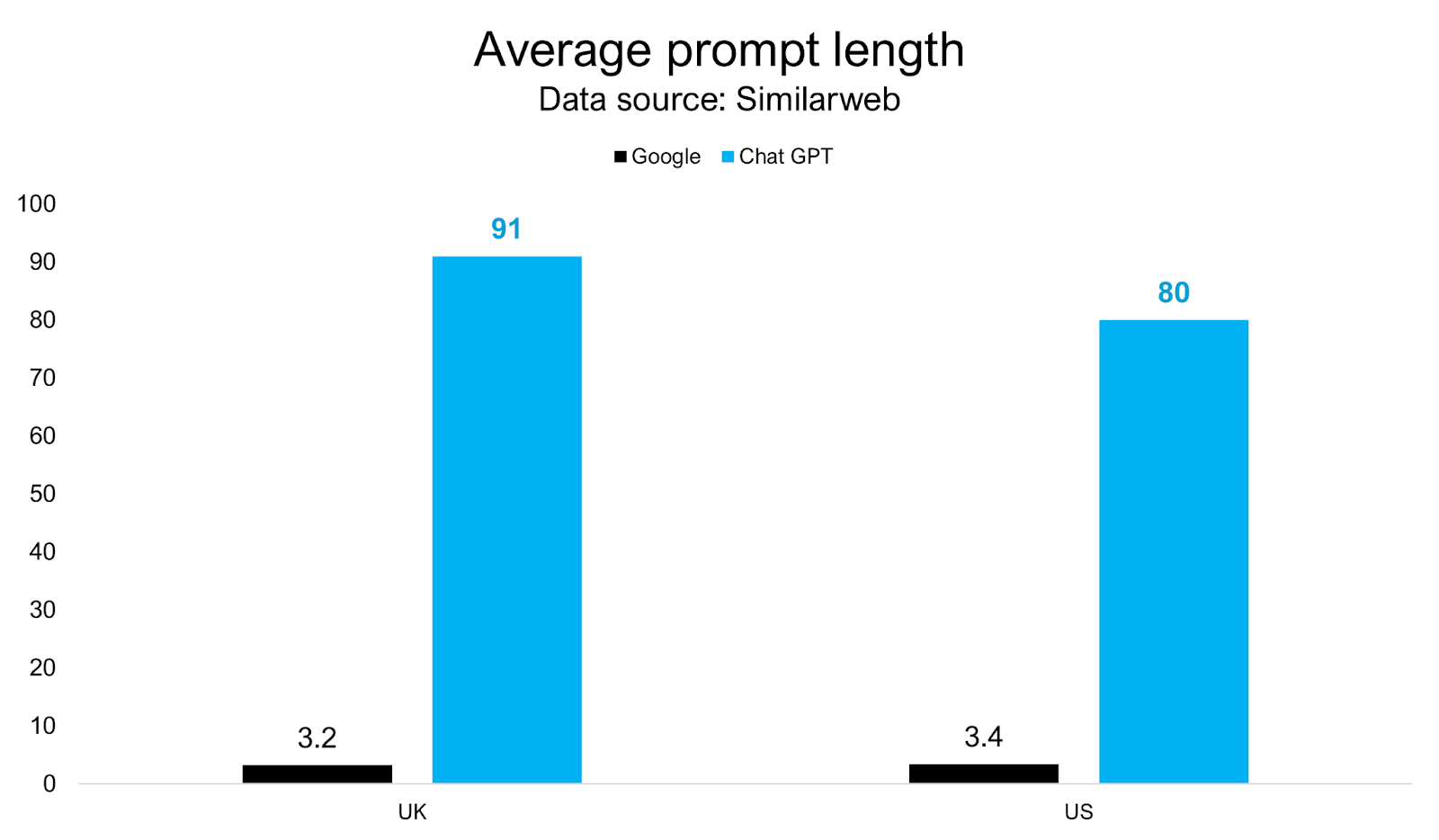 Image Credit: Kevin Indig
Image Credit: Kevin IndigAs a result, the average query prompt length on ChatGPT vs. Google is:
- 80 words vs 3.4 in the U.S.
- 91 words vs. 3.2 in the UK.
Even informational prompts are 10 times longer (~38 words) on ChatGPT than on Google. People ask more detailed questions, which reveal much more about themselves and their intent.
Together with a growing context window, ChatGPT returns much more personalized and (usually) better informational answers – I’m still waiting on consistently better commercial/purchase intent outcomes.[3] AI chatbots compress the user journey from many queries over several days to one conversation with lengthy prompts.
For you, this means it’s even more critical to monitor the right prompts.
(I shared a trick with premium subscribers for finding prompts in Google Search Console from AI Mode in Is AI cutting into your SEO conversions?)
Referral Traffic: Outgoing ChatGPT Traffic Grew By 723% In The US
As referral traffic from Google reached historic lows, ChatGPT’s referral traffic reached new highs.
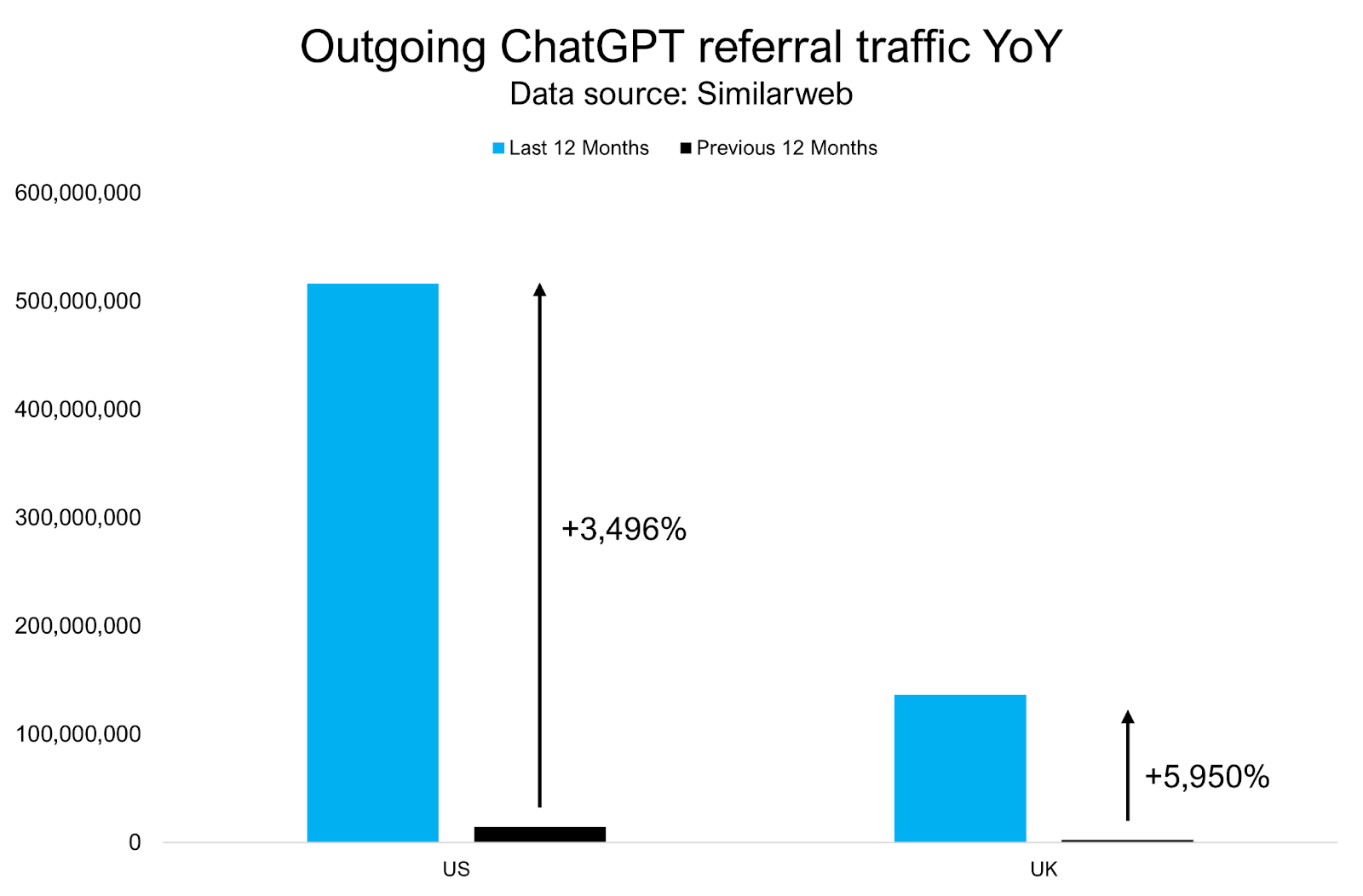 Image Credit: Kevin Indig
Image Credit: Kevin IndigOver the last 12 months, ChatGPT’s U.S. referral traffic to websites jumped by +3,496% (UK: +5,950%), from 14 to 516 million (after cleaning up referrals to Openai.com, which are mostly authentications).
In comparison, Google’s outgoing referral visits grew only +23% in the U.S. and 19% in the UK.
When you consider Google referrals include navigational searches (people navigating to the homepage of a brand) and ad clicks (ChatGPT doesn’t yet have ads), 23% is not much at all.
ChatGPT’s referral traffic to external websites makes up ~27% of Google’s (1.9 billion, in the last 12 months), based on the data. That feels high, in my field observation.
Also consider that ChatGPT’s goal is not necessarily to send out traffic but to keep the conversation going until users have the optimal response.
That being said, referral traffic has grown and continues to do so. Until recently.
According to Profound, ChatGPT’s referral traffic was down -52% between July 21 and August 20. [4] And that’s significant.
Time will tell whether this is just an experiment or a final decision.
For you, this means you should see more ChatGPT referral traffic over the last 12 months if you optimize well.
You might not see an increase of +3,500%, but if you’re not seeing at least some growth, it’s likely your competitors are.
Conversions: ChatGPT > Google
Conversions from ChatGPT are small in comparison with Google (in volume), but they’re growing rapidly.
The whole narrative of investing in AI visibility optimization (AEO/GEO/LLMO) banks on the fact that it will continue at the same pace and become meaningful.
So far, it seems like that bet will work out.
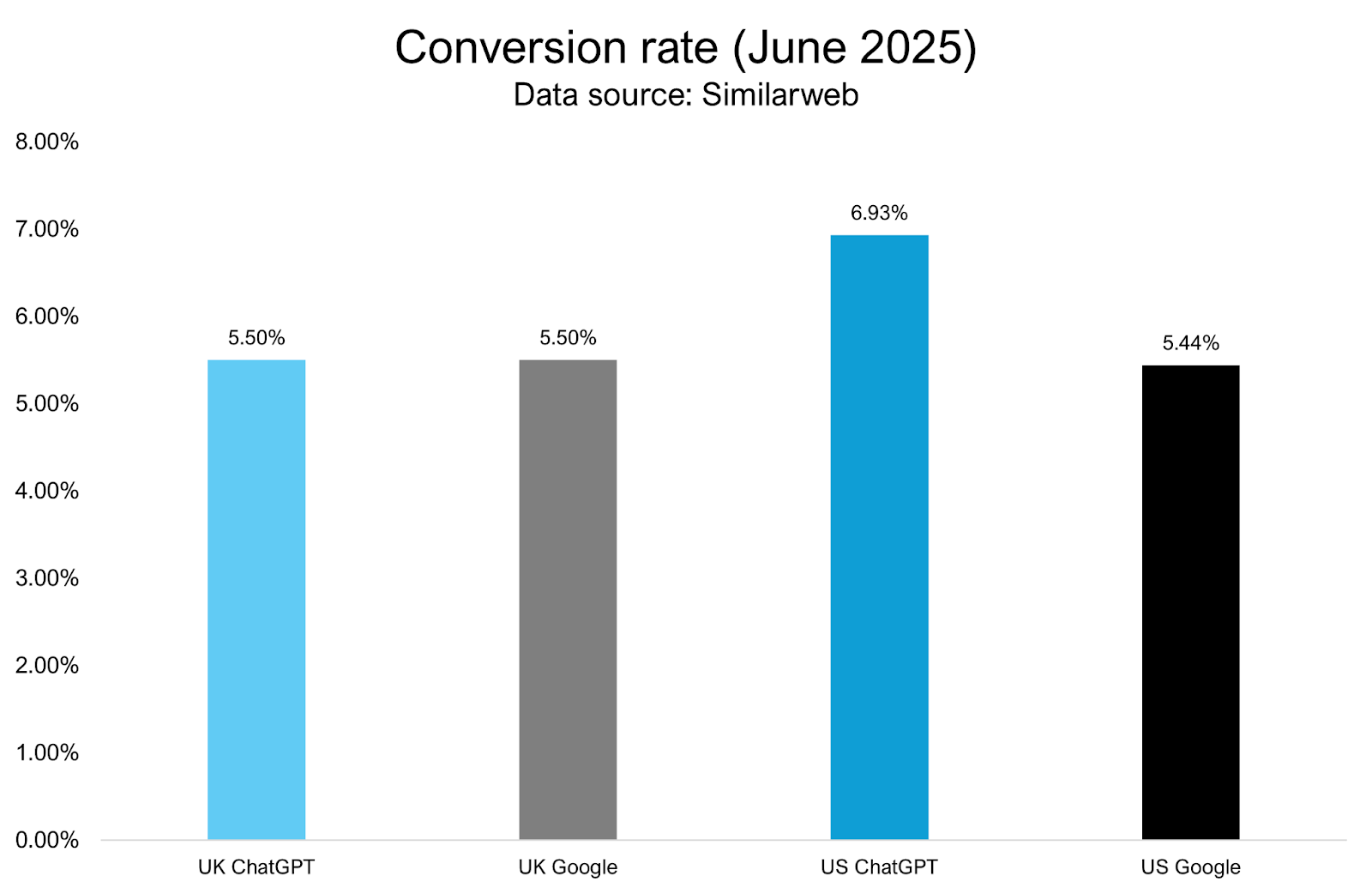 Image Credit: Kevin Indig
Image Credit: Kevin IndigWhen ChatGPT sends traffic to sites, the conversion rate is usually higher than Google’s. As of June 2025:
- ChatGPT’s conversion rate of transactional traffic was 6.9% in the U.S. compared to 5.4% for Google.
- In the UK, ChatGPT reached 5.5%, which is on par with Google.
ChatGPT sends higher-quality traffic to websites, at least in the U.S.
I define quality in this context as “higher intent,” meaning visitors are more likely to convert into customers.
The reason ChatGPT traffic is of higher quality is that users get answers to their questions in one conversation. When they click out, they’re “primed” to buy.
To me, the bigger question is how purchase decisions are influenced before a click happens (or even when no click-out happens).
For you, this means:
- Look at which pages get referral traffic. Take the average referral traffic and optimize pages that get some but below-average clicks.
- Optimizing for citations matters because citations are what get clicked. Look at the citation gap between your competitors and your site.
- Look for conversion optimization opportunities (in-line CTAs, lead gen assets, quizzes, etc) on pages that get ChatGPT referral traffic. Using a standard heatmap tool will point you to areas of the page that are ideal for a little CRO.
Bringing It All Together
ChatGPT has all the ingredients to become the next big user platform on which other companies can build – just like Google 25 years ago:
- Usage is growing.
- Behavior is rich in context.
- Referral traffic is shooting up.
- Conversions happen at a healthy rate.
Now, traffic and conversations just need more volume.
They’re still tiny in comparison.
Featured Image: Paulo Bobita/Search Engine Journal


